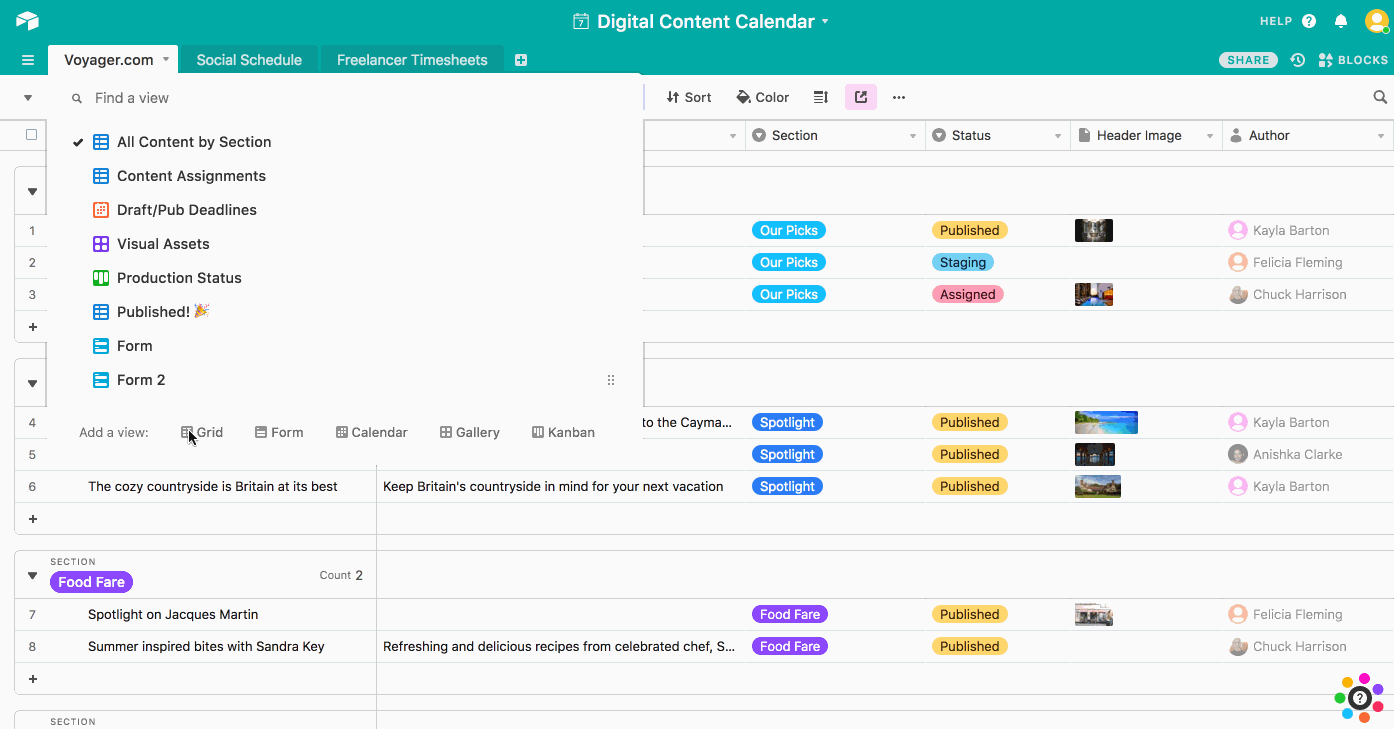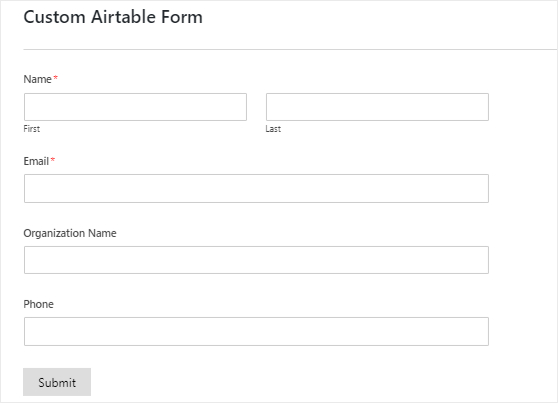
Opening the form again, this time I choose his existing record under “Player,” skip the name fields, and only enter data into the two fields that I want to modify: “Weight" and "Speed (sec)”.
AIRTABLE FORM BANNER RESOLUTION UPDATE
John Smith has dropped a few pounds and improved his speed, so I want to update his info. With two players entered, here’s how the tables look: In other words, I’m assigning this data to be displayed in a specific record in the mirror table. In essence, choosing a specific “Unnamed record” entry tells Airtable which record in the mirror table I want to use to view the data that I’m entering. I’ll go ahead and enter the second player’s info, again choosing the next available “Unnamed record” before filling out the rest.

That’s because the name I entered gets looked up in the mirror table, mashed together via the formula into the primary field, which is now referenced by the refreshed form. Looking at the available entries under “Player”, the first entry won’t be “Unnamed record” any more, but should match the name of the player I previously entered.
AIRTABLE FORM BANNER RESOLUTION FULL
I won’t capture the full form here, but the top part will look like this: I’ll then fill out the player’s first and last name, and any stats that I have. Under “Player", I’ll choose the first “Unnamed record” entry that’s available in the list. Let’s say I’m entering data for a football player for the first time. Assuming it all looks good, click “Open form” in the form’s toolbar, which will open the form in your web browser. It should add all of the fields from the main grid view in the same order. Now we’re ready to start talking about how a form fits into all this. As we move on, you’ll see why they need to be there. You can add them in chunks, or add a ton all at once. The last thing to do in our mirror table setup is add a bunch of blank records to the mirror table. Name it appropriately for your situation. In my case I’ll name this, but I won’t do anything with its fields just yet.īack in the table, insert a new field between the primary field and your first data field, and make it a link to your “mirror” table ( in this example). This will become the “mirror” table, the main place to view all of the data that you collect. Borrowing from the thread that inspired this system, my example setup will focus around stats for football players:

After deleting the default records, change the primary field to the Autonumber type, then set up the remaining fields for the data you want to collect. To build this system, the first table to make will be the table.

Extending that to allow data from subsequent form-generated records to effectively replace older data in the “mirror” table only took a few more steps. Long story short, the key to that solution was using two tables: one for collecting form data, and another that looks up that form data and fills out a parallel set of fields. However, a base can be set up so that records created by a form end up affecting records in another “mirror" table.Īs with my first show-and-tell submission, this was inspired by a solution that I created in another thread. Technically the answer is “no” because Airtable forms always create new records. People sometimes ask whether it’s possible to use an Airtable form to edit an existing record.


 0 kommentar(er)
0 kommentar(er)
